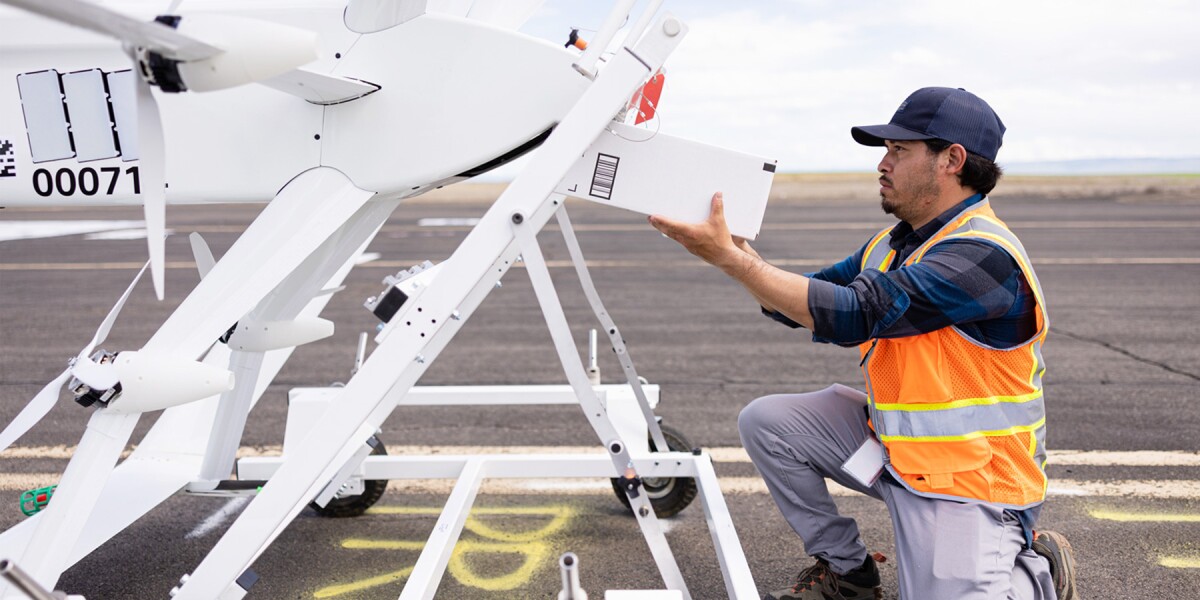Amazon drone delivery locations are rapidly expanding, marking a significant shift in how we receive packages. This guide explores the current status of Amazon’s drone delivery program, examining the factors influencing location selection, the necessary infrastructure, and the public’s perception of this innovative technology. We’ll delve into the technological challenges, future prospects, and the potential environmental impact of widespread drone delivery, painting a comprehensive picture of this evolving landscape.
From the logistical considerations of choosing suitable locations—weighing population density, infrastructure, and airspace regulations—to the technological hurdles of autonomous navigation and package handling, we’ll cover it all. We’ll also analyze customer experiences, address public concerns regarding safety and privacy, and project the future expansion of Amazon’s drone delivery network.
Current Amazon Drone Delivery Program Status
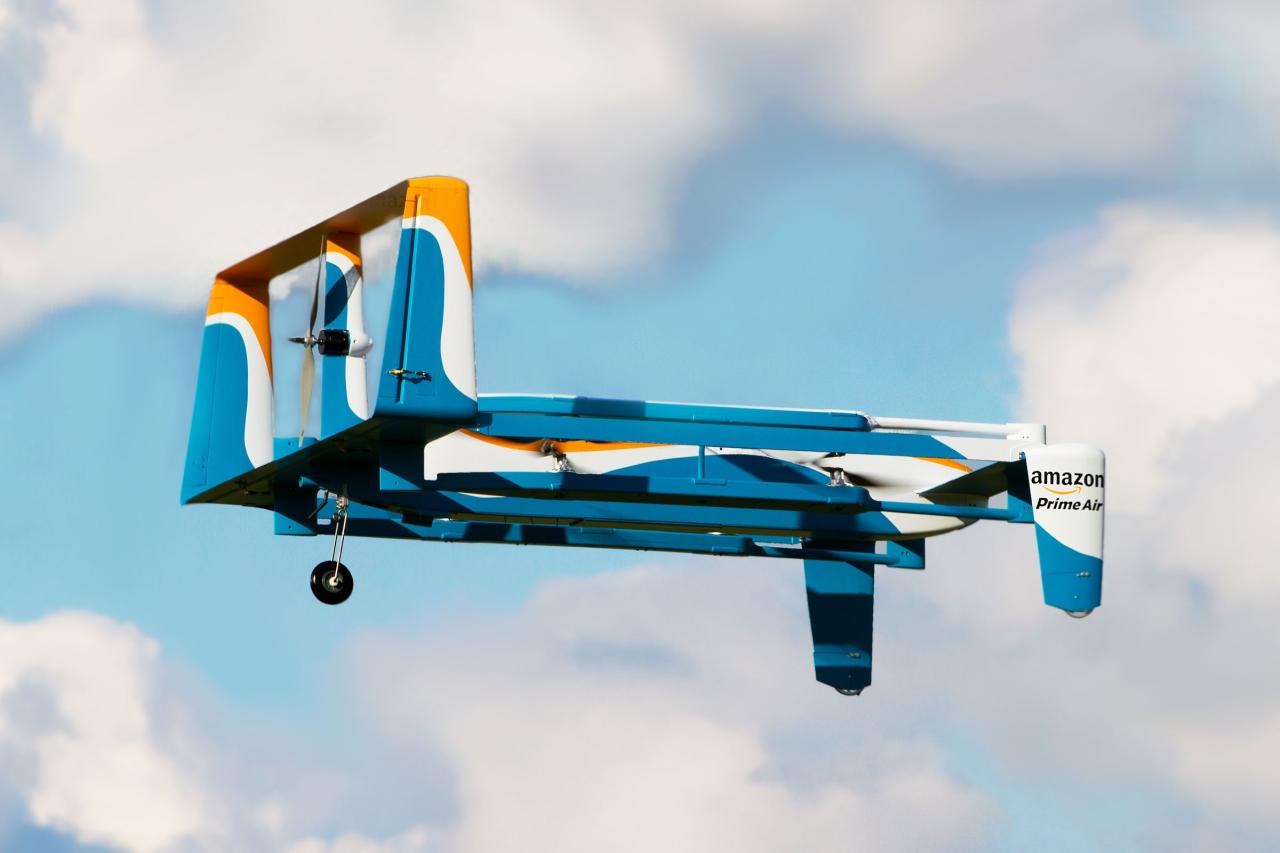
Amazon’s drone delivery program, officially known as Amazon Prime Air, is steadily expanding its reach and capabilities, though it’s still in a relatively early stage of development compared to its broader logistics network. While not yet a widespread service, it represents a significant investment in future delivery technology.Amazon Prime Air’s current operational scope is limited to specific areas within the United States.
The service isn’t available nationwide, and even within operational areas, accessibility depends on factors like weather conditions and package suitability. The program’s expansion is gradual and strategic, focusing on areas with favorable conditions for drone operation and dense populations to maximize efficiency.
Geographical Scope of Amazon Drone Delivery
Currently, Amazon Prime Air operates in a limited number of locations in the United States. These locations are carefully selected based on factors such as population density, airspace regulations, and infrastructure suitability. The company is gradually expanding its operational area, but a precise map of currently served locations isn’t publicly released in full detail. Information is typically revealed on a case-by-case basis as new operational areas are added.
Eligible Package Types for Drone Delivery
Not all packages are suitable for drone delivery. Amazon Prime Air focuses on smaller, lighter packages that can be safely and efficiently transported by its drones. This typically includes items like everyday household goods, small electronics, and books. Larger, heavier, or fragile items are usually excluded, as they pose a greater risk of damage during transport. The specific dimensions and weight limits for eligible packages are determined by Amazon and may vary depending on the drone model and operational conditions.
For example, currently, only packages under a certain weight and size are allowed.
Technological Infrastructure for Amazon Drone Delivery
Amazon Prime Air’s operations rely on a sophisticated technological infrastructure. This includes a fleet of autonomous drones equipped with advanced sensors, GPS, and obstacle avoidance systems. The drones communicate with a central control system that monitors their flights and manages their routes. The company also utilizes proprietary software for flight planning, package tracking, and delivery optimization. Furthermore, Amazon invests in infrastructure such as drone landing zones and charging stations at strategic locations to facilitate efficient drone operations.
Data centers and cloud computing power the system’s management and processing of massive amounts of data related to flight routes, weather patterns, and package delivery information.
Timeline of Amazon Drone Delivery Program Expansion
Amazon first announced its Prime Air drone delivery program in 2013. Initial testing and development phases involved various drone prototypes and extensive simulations. The program has gradually expanded its operational areas and capabilities over the years, with limited public deliveries beginning in 2020. The expansion continues incrementally, with Amazon focusing on refining its technology and optimizing its operational processes before broader deployment.
The exact timeline for nationwide or global availability remains undisclosed. The company emphasizes a phased approach, prioritizing safety and regulatory compliance during its expansion.
Factors Influencing Location Selection for Drone Delivery
Choosing the right locations for Amazon’s drone delivery service is crucial for its success. Several interconnected factors must be carefully considered to ensure efficient and safe operations while maximizing the potential customer base. These factors range from logistical challenges like infrastructure and airspace limitations to regulatory hurdles and the acceptance of the technology within communities.
Logistical Considerations in Drone Delivery Location Selection
Effective drone delivery requires a strategic approach to location selection. Key logistical aspects include population density, the existing infrastructure, and the complexities of airspace regulations. High population density areas offer a larger potential customer base, but present challenges related to airspace congestion and noise pollution. Conversely, sparsely populated areas may have less demand but easier airspace management. Existing infrastructure, such as reliable communication networks and suitable landing zones, is essential for seamless operations.
A robust network is vital for real-time tracking and control of drones. Suitable landing zones might include designated areas on rooftops, specially designed pads in parks, or even customers’ backyards, depending on the specific regulations and community acceptance. Airspace regulations, which vary by region and country, significantly influence the feasibility of drone operations in certain locations. Restricted airspace near airports or other sensitive areas limits potential delivery zones.
Urban, Suburban, and Rural Suitability for Drone Delivery
The suitability of different environments for drone delivery varies significantly. Urban areas offer a large potential customer base, but present challenges due to densely populated airspace, tall buildings, and complex air traffic. Suburban areas offer a balance between population density and relatively less congested airspace, making them potentially ideal locations. However, suburban areas can still face challenges like tree cover and varying terrain.
Rural areas, with their open spaces and less congested airspace, might seem ideal at first glance. However, the lower population density means fewer potential customers, making the cost-effectiveness of drone delivery less favorable compared to urban or suburban areas. The optimal strategy may involve a phased rollout, starting with suburban areas before expanding to more challenging urban or rural settings.
Regulatory Approvals and Community Acceptance in Site Selection
Gaining necessary regulatory approvals and ensuring community acceptance are paramount for successful drone delivery operations. Securing permits and licenses from relevant aviation authorities is a crucial step. This process involves demonstrating compliance with safety regulations, noise level restrictions, and privacy concerns. Community acceptance is equally important. Addressing potential concerns regarding noise pollution, privacy violations, and safety risks through open communication and proactive engagement with local communities is essential.
Building trust and demonstrating the benefits of drone delivery are crucial for overcoming potential resistance and fostering a positive reception. Successful programs will involve transparent communication and community engagement.
Impact of Weather Conditions on Operational Feasibility
Weather conditions significantly impact the operational feasibility of drone delivery. Adverse weather such as strong winds, heavy rain, snow, or fog can ground drones, disrupting operations and potentially delaying deliveries. Locations with predictable and favorable weather patterns are more suitable for consistent and reliable drone delivery. For instance, areas with less frequent extreme weather events are more attractive.
Operational plans must incorporate contingency measures to address unforeseen weather disruptions. This might include rerouting deliveries, temporarily suspending operations, or employing weather forecasting tools to optimize flight scheduling.
Amazon’s expanding drone delivery network is aiming for wider coverage, but safety is key. Recent news reports, like this article on drone crashes in Paris , highlight the challenges of urban drone operations. These incidents underscore the need for robust safety protocols as Amazon continues to select and develop new drone delivery locations.
Infrastructure Requirements and Technological Limitations
Amazon’s drone delivery program requires significant infrastructure investment and faces considerable technological hurdles. Successful implementation hinges on addressing these challenges effectively, balancing cost with scalability and reliability. This section details the infrastructure needs, technological limitations, and a potential expansion plan.
Infrastructure Requirements at Different Delivery Locations
The infrastructure requirements vary depending on the location’s characteristics, such as population density, terrain, and existing infrastructure. A well-planned infrastructure is crucial for efficient and safe drone operations.
| Location Type | Infrastructure Needed | Cost Estimate (USD) | Maintenance Requirements |
|---|---|---|---|
| Suburban Residential Area | Drone landing pads (multiple, dispersed), small charging stations at each pad, local communication network integration (e.g., 4G/5G, dedicated Wi-Fi network), weather monitoring systems. | $5,000 – $15,000 per landing pad; $1,000 – $5,000 per charging station; network integration costs variable. | Regular pad cleaning, charging station maintenance, network connectivity checks, weather system calibration. |
| Rural Area | Larger, more robust landing pads (to account for potential uneven terrain), larger charging stations with solar power integration, satellite communication systems (for areas with limited cellular coverage), more extensive weather monitoring. | $10,000 – $30,000 per landing pad; $5,000 – $15,000 per charging station; satellite communication costs significant. | Regular pad maintenance, charging station maintenance (including solar panel cleaning), satellite system upkeep, more frequent weather monitoring checks. |
| Urban Area | Elevated landing pads (rooftops, designated areas), secure charging stations, integrated urban air mobility (UAM) management system, advanced obstacle avoidance systems, sophisticated communication network with high bandwidth. | $20,000 – $50,000 per landing pad; $10,000 – $25,000 per charging station; significant costs for UAM integration and network infrastructure. | Regular security checks, maintenance of elevated pads, UAM system updates, frequent network monitoring and maintenance. |
Technological Challenges in Autonomous Drone Navigation and Package Handling
Autonomous drone navigation faces challenges such as accurate GPS signal reception in urban canyons or heavily forested areas, dynamic obstacle avoidance (e.g., birds, unexpected objects), and reliable operation in various weather conditions (e.g., strong winds, rain, snow). Precise package handling, including secure gripping and delivery mechanisms, is crucial to avoid damage and ensure safe delivery. Advanced sensor technologies (LiDAR, cameras, radar) and sophisticated AI algorithms are essential for addressing these challenges.
For example, Amazon’s Prime Air utilizes sophisticated computer vision and machine learning to allow drones to autonomously navigate and land.
Limitations Imposed by Current Drone Technology on Package Size and Weight, Amazon drone delivery locations
Current drone technology limits package size and weight due to battery capacity, payload capacity, and safety regulations. Larger and heavier packages require larger, more powerful drones, which in turn have shorter flight times and higher energy consumption. This restricts the range and number of deliveries possible per drone. For example, many current delivery drones have a weight limit of around 5 pounds.
Amazon’s expanding drone delivery network is aiming for more locations, but safety is key. Recent news reports, like this article on drone crashes in Paris , highlight the challenges of urban drone operations. Understanding these risks is crucial for Amazon as they continue to refine their drone delivery locations and protocols to ensure safe and efficient service.
Hypothetical Expansion Plan for Drone Delivery Infrastructure
A phased expansion plan is crucial for cost-effectiveness and scalability. Phase 1 would focus on establishing pilot programs in suburban areas with favorable infrastructure conditions. This allows for data collection and refinement of operational procedures. Phase 2 would involve expanding to rural areas, integrating satellite communication systems and more robust infrastructure. Phase 3 would target urban areas, requiring substantial investment in UAM integration and advanced safety systems.
Each phase would incorporate feedback from previous phases, ensuring continuous improvement and optimization of the drone delivery network. Cost-effectiveness can be achieved through strategic partnerships with existing infrastructure providers (e.g., telecommunication companies) and leveraging economies of scale as the program expands. This phased approach, similar to how Amazon initially rolled out its Prime delivery service, minimizes risk and maximizes learning opportunities.
Customer Experience and Public Perception
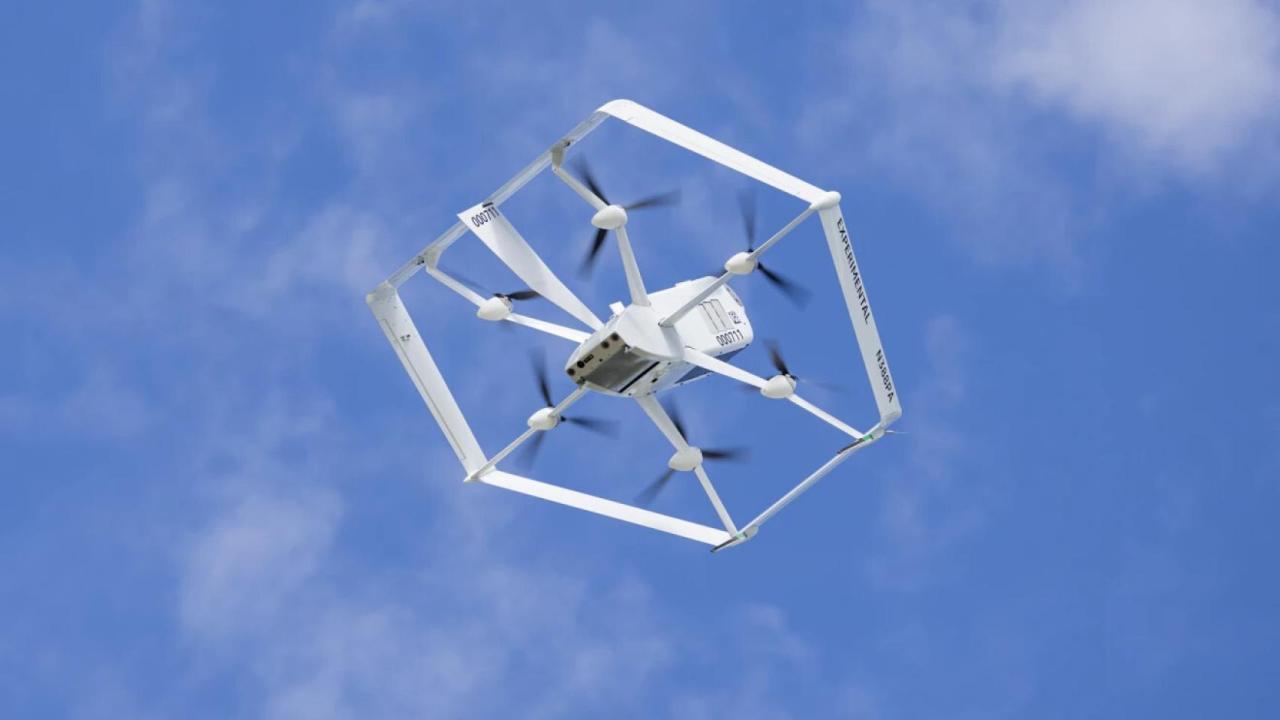
Amazon’s drone delivery program, while still in its relatively early stages, is generating significant buzz and raising important questions about customer satisfaction and public acceptance. Understanding both the positive and negative aspects of this novel delivery method is crucial for its successful implementation and widespread adoption. This section examines customer experiences, analyzes public perception, and explores strategies to address concerns and foster greater acceptance.
Customer Testimonials Regarding Drone Deliveries
Several early adopters have shared their experiences with Amazon drone deliveries. One customer described the experience as “surprisingly smooth.” They recounted how the drone arrived quietly and efficiently, hovering precisely over their designated drop-off zone. The package was gently lowered via a cable system, and the entire process took only a few minutes. Another customer praised the convenience, noting that it eliminated the need to be home for a delivery, as the drone could drop off packages even when they were away.
Amazon’s expanding drone delivery network is aiming for more locations, but safety is key. Recent incidents, like the one detailed in this report on the paris drone crash , highlight the challenges of urban drone operations. Understanding these risks is crucial for determining the future viability and expansion of Amazon’s drone delivery locations.
However, a few initial challenges emerged. One customer reported a slight delay due to unforeseen weather conditions, while another mentioned initial apprehension about the technology before witnessing its safe and precise operation. These experiences highlight both the potential benefits and the need for robust systems to handle unforeseen circumstances.
Benefits and Drawbacks of Drone Delivery from a Customer Perspective
From a customer’s perspective, drone delivery offers several key advantages. The most prominent is convenience: packages arrive quickly, often within hours of ordering, eliminating the need to schedule deliveries or be home to receive them. This speed and flexibility are especially beneficial for time-sensitive deliveries or when receiving larger items that may be difficult to transport. Additionally, the reduced reliance on ground transportation can potentially lead to lower delivery costs for certain items and locations.However, drawbacks exist.
The limited carrying capacity of current drones restricts the size and weight of packages that can be delivered. Furthermore, drone deliveries are currently limited to specific geographical areas with suitable infrastructure, excluding many customers from experiencing this service. Concerns about package security and the potential for accidents also remain.
Public Perception of Drone Delivery
Public perception of drone delivery is complex. While many appreciate the potential benefits of speed and convenience, concerns regarding safety, noise pollution, and privacy persist. Safety concerns include the possibility of drone malfunctions or accidents leading to property damage or injury. Noise pollution from multiple drones operating simultaneously in residential areas is another significant concern, particularly for noise-sensitive individuals.
Privacy issues arise from the potential for drones to capture images or videos of private property, raising concerns about surveillance and data security.
Strategies to Address Public Concerns and Improve Acceptance of Drone Delivery
Addressing these concerns requires a multi-pronged approach. Implementing stringent safety protocols and rigorous testing procedures are crucial to mitigate risks and build public trust. Noise reduction technologies, such as quieter drone propellers and optimized flight paths, can minimize noise pollution. Clear communication about data privacy policies, including how drone data is collected, stored, and used, can alleviate privacy concerns.
Public education campaigns can highlight the safety features and benefits of drone delivery, while community engagement initiatives can involve residents in the planning and implementation process, fostering a sense of ownership and buy-in. Transparency regarding the technology, its limitations, and the measures taken to address safety and privacy concerns will be key to improving public acceptance.
Future Prospects and Potential for Growth
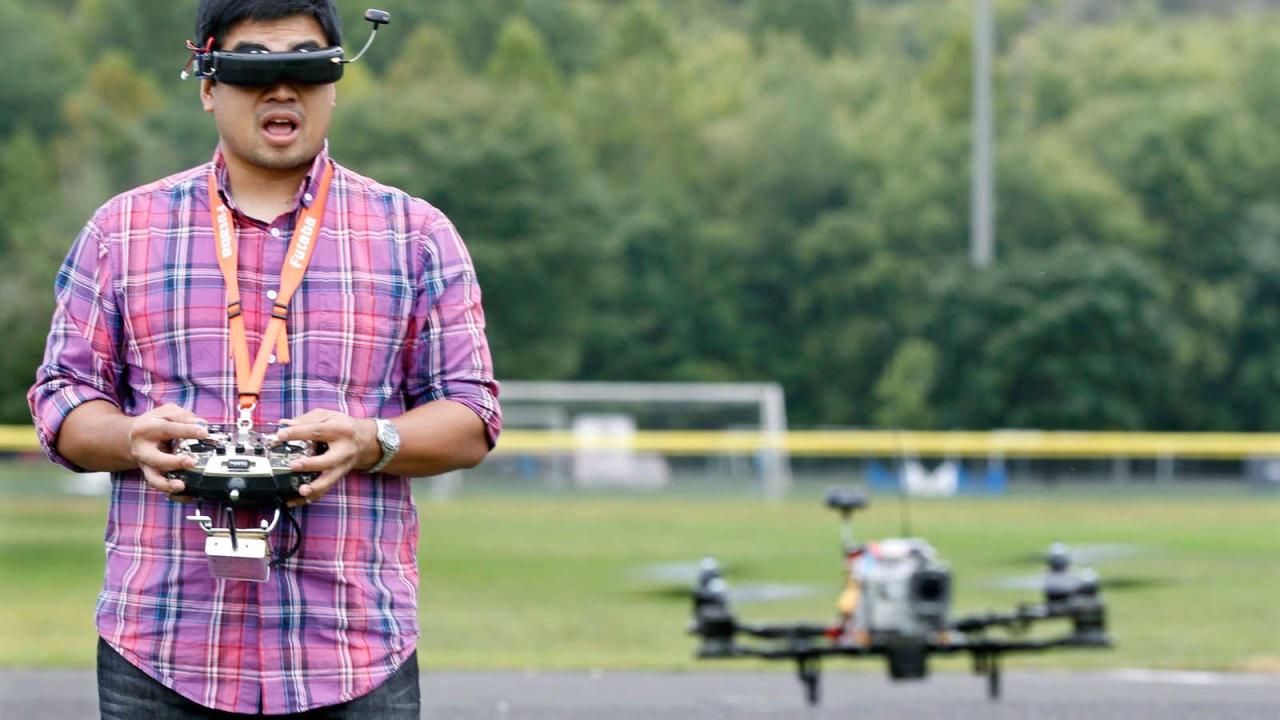
Amazon’s drone delivery program is still in its relatively early stages, but its potential for growth over the next decade is significant. We can expect to see a substantial expansion of its delivery network, fueled by technological advancements and increasing integration with other Amazon logistics services. This expansion will likely reshape the landscape of last-mile delivery, offering both benefits and challenges.The expansion of Amazon’s drone delivery network over the next 5-10 years will likely involve a significant increase in the number of delivery locations and a broadening of the range of goods that can be delivered via drone.
We can envision a scenario where drone delivery becomes commonplace in suburban and rural areas, supplementing or even replacing traditional ground-based delivery methods for smaller, lighter packages. This expansion will depend heavily on regulatory approvals and public acceptance, but given Amazon’s resources and commitment, a substantial growth is highly probable. For example, if we consider the current growth rate and extrapolate it based on past successes of similar technological implementations, we might see a tenfold increase in delivery locations within the next 5 years.
Drone Delivery Integration with Amazon Logistics
Amazon’s drone delivery service will likely become increasingly integrated with its existing logistics network. This integration could involve using drones for the final leg of a delivery journey, after a package has been transported to a regional distribution center by truck. Drones could also be used to transport goods between distribution centers, streamlining the overall delivery process and potentially reducing transit times.
Imagine a scenario where a package arrives at a regional hub via truck, then is swiftly dispatched to its final destination by drone, cutting down on delivery times significantly. This would particularly benefit time-sensitive deliveries, improving customer satisfaction and operational efficiency.
Technological Advancements Enhancing Drone Delivery
Several technological advancements are poised to significantly enhance the capabilities of Amazon’s drone delivery system. Improved battery technology, for instance, will extend flight range and payload capacity, allowing drones to cover larger distances and deliver heavier packages. Advances in AI-powered navigation will improve drone autonomy and safety, enabling more complex flight paths and operations in challenging weather conditions. Consider the potential impact of a battery that doubles the current flight time – drones could service a much wider area, reducing the need for multiple drone deployments for a single delivery region.
Similarly, more robust AI-based obstacle avoidance systems would increase safety and reduce the likelihood of accidents.
Environmental Impact of Widespread Drone Delivery
The environmental impact of widespread drone delivery is a complex issue with both positive and negative aspects. On the positive side, drones could reduce the carbon footprint of last-mile delivery by replacing gas-powered vehicles. This would be particularly beneficial in urban areas, where traffic congestion contributes significantly to emissions. However, the manufacturing and disposal of drones, as well as the energy consumption associated with their operation, could have negative environmental consequences.
A comprehensive lifecycle assessment of drone delivery is necessary to fully understand its environmental impact and to develop strategies for minimizing negative effects. For example, the use of sustainable materials in drone construction and the development of efficient recycling programs could mitigate some of the negative environmental consequences.
Last Recap
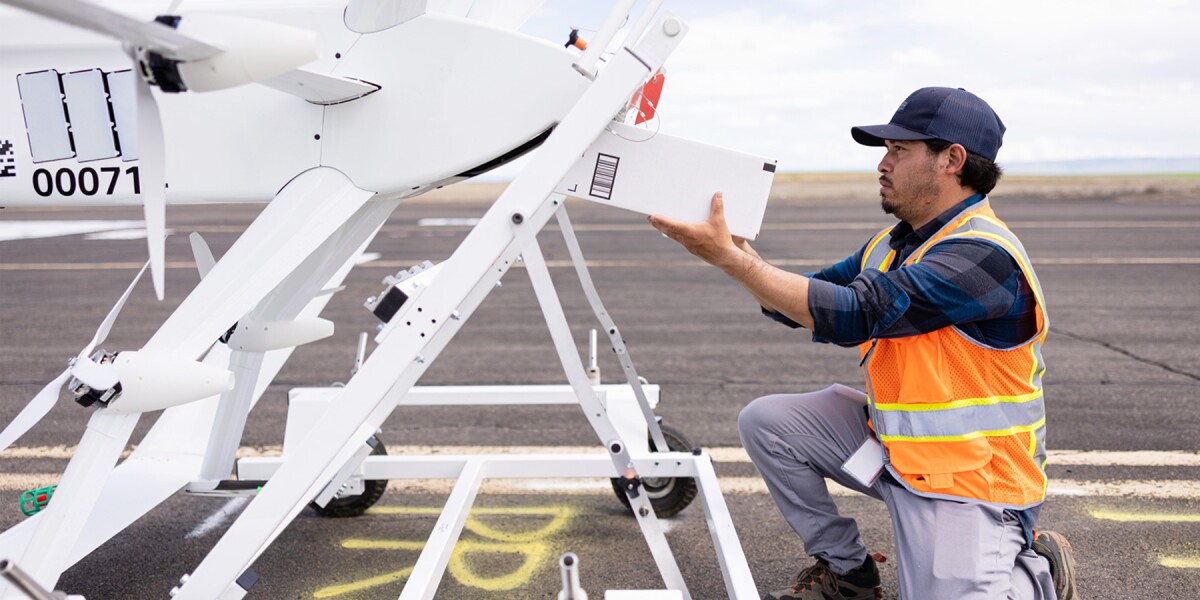
Amazon’s drone delivery program represents a bold step towards faster, more efficient package delivery. While challenges remain—from regulatory hurdles and technological limitations to public perception—the potential benefits are undeniable. As technology advances and public acceptance grows, we can expect to see a significant expansion of Amazon drone delivery locations in the coming years, transforming the logistics landscape and redefining the customer experience.
FAQ Corner: Amazon Drone Delivery Locations
How much does Amazon charge for drone delivery?
Currently, Amazon drone delivery is typically free for eligible items and orders, but this may change in the future.
What types of packages are ineligible for drone delivery?
Items that are oversized, overweight, fragile, or require special handling are usually not eligible.
How long does Amazon drone delivery take?
Delivery times vary depending on location and other factors, but it’s generally designed to be much faster than traditional delivery methods.
Is Amazon drone delivery available internationally?
No, currently Amazon drone delivery is limited to specific locations within the United States.
What happens if there’s a problem with my drone delivery?
Amazon has customer support channels to address any issues that might arise with drone deliveries, similar to their standard delivery service.
